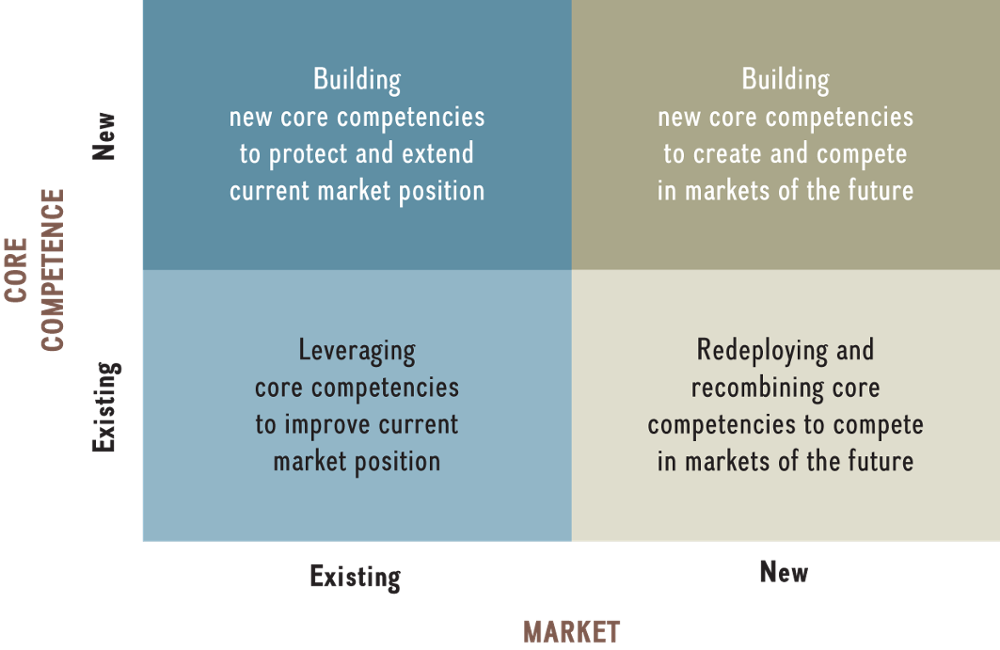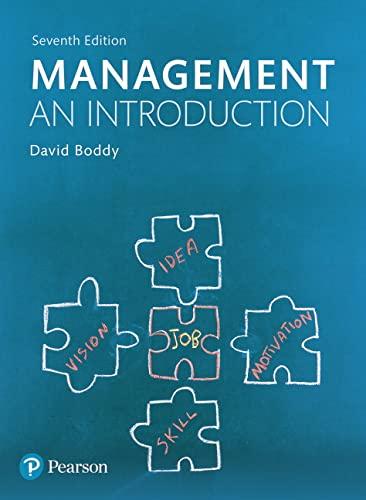Question
LEGO's Turnaround: Brick by Brick This activity is important because, as a manager, you must be able to help your organization remain competitive by choosing
LEGO's Turnaround: Brick by Brick This activity is important because, as a manager, you must be able to help your organization remain competitive by choosing the most appropriate strategy. The goal of this exercise is to demonstrate your understanding of business-level and corporate strategies by applying learned concepts to the story of LEGO's recent comeback and future challenges. Read the case below and answer the questions that follow.
Case In the decade between 2006 and 2016, LEGO?the famous Danish toy company?grew fivefold from a bit over $1 billion in revenues to $6 billion (see Exhibit MC12.1). In 2016 LEGO delivered its best results in terms of top-line revenues and bottom-line profits in its 85-year history. It beat out long-time rivals Mattel and Hasbro, to become the world's largest and most profitable toy company. How did this privately held toy company from an obscure town in Denmark beat the well-funded and publicly traded U.S. companies Hasbro and Mattel? Rediscovering, leveraging, and extending its core competence allowed a successful revival for a company that was floundering in the early 2000s. How did LEGO construct a successful turnaround? To answer this question, we first need to understand a bit of the history of this Danish wonder company. LEGO's Humble Beginnings The company was founded in 1932 by Ole Kirk Kristiansen.
The name is a contraction of the Danish words Leg godt, which means "play well." Only later did LEGO executives realize that le go in Latin also means "I assemble." Throughout its history, LEGO has had numerous formidable competitors, but it has outperformed all of them. Tinkertoys were more complex; Lincoln Logs were limited in what could be constructed; traditional blocks had nothing to hold them together and were too large to show much detail. LEGO bricks were the right balance of simplicity, versatility, and durability. LEGO competes for the attention of children and their parents, who buy the product. Moreover, there is also a sizable group of adult LEGO fans. In the wake of the personal computer revolution in the 1990s, the popularity of LEGO began to wane because of attractive alternatives for children such as gaming consoles and computer games. By 1998, LEGO was in trouble. The Danish toymaker hired a highly touted turnaround expert to change its fortune. Unfortunately, he had no background in the toy industry.
To make matters worse, the new executive decided that LEGO's hometown of Billund, Denmark, with 6,000 people, was too provincial. He continued to live in Paris and either commute or run the company remotely. Things at LEGO went from bad to worse. It started hyperinnovating and diversified into too many areas, too quickly, and too far away from its core. Among a whole slew of other innovation failures, the company created a Saturday morning cartoon called "Galidor," which flopped. During this time period, it also decided to become a lifestyle company and to offer LEGO-branded clothing and accessories. LEGO's Turnaround By 2003, LEGO was on the verge of bankruptcy. To avoid this fate, the closely held private company, owned by the Kristiansen family since its inception, needed to do something drastic and quickly. Almost out of desperation, it hired Jrgen Vig Knudstorp as CEO.
His rsum was quite unusual to say the least: He was only 35 years old (in comparison, the average age for a Fortune 500 CEO is 55 years), held a doctorate in economics, and was a former academic. Knudstorp had transitioned to McKinsey, one of the world's premier strategy consulting firms. Knudstorp decreed that LEGO must "go back to the brick" and focus on core products. As a result of the strategic refocusing, LEGO divested a number of assets including its theme parks. It also drastically culled its product portfolio by almost 50 percent, from some 13,000 pieces to 7,000. At the same time as Knudstorp focused LEGO again on its fundamental strengths, he was also careful to balance exploitation?applying current knowledge to enhance firm performance in the short term?with exploration?searching for new knowledge that may enhance a firm's future performance. This allowed LEGO to improve the performance of traditional product lines, while at the same time to innovate, but this time in a much more disciplined manner. In particular, LEGO increased sales of its well-known existing products by strengthening the interoperability of various LEGO pieces with other sets to encourage user innovation and creativity.
To drive innovation, LEGO has brought its adult fans into the product development process to leverage crowdsourcing?obtaining ideas from a large fan base using online forums and other Internet-based technologies.
To drive future growth, LEGO has been much more careful with its product extensions. In the past LEGO licensed its brand freely to other brands, including Star Wars, Indiana Jones, Harry Potter, the Lord of the Rings, Batman, the Simpsons, and Iron Man. But the benefits from these licensing agreements accrued mainly to the existing brands, because LEGO did not own the more critical intellectual property.
Knudstorp instead focused on owning and leveraging the core intellectual property. The LEGO Movie in 2014 was a particular high for the company, grossing $500 million in the first year of its release on a $60 million budget. Unlike in previous movie tie-ins, LEGO owned the intellectual property, which meant LEGO did not need to split profits with existing brands. In 2017, the company repeated this feat with The LEGO Batman Movie, also a computer-animated superhero comedy film that was almost as successful: With a budget of $80 million, it grossed over $310 million, making it one of the top-10 box office hits in 2017. Challenges Although LEGO grew more than fivefold after Knudstorp took over, it faces a number of challenges. LEGO needs to strengthen its triple-bottom-line performance along economic, social, and ecological dimensions, and address globalization challenges.
LEGO must address ecological concerns in the face of growing consumer criticism: Its signature bricks are made from petroleum-based plastic. The company is searching for an environmentally friendly material to replace its bricks, which date to 1963. To reduce its relatively large carbon footprint, the company is spending millions on a 15-year R&D project in hope of finding an eco-friendly alternative. The goal is to invent and then manufacture bricks cost-effectively from a new bio-friendly material that will be virtually indistinguishable from the current blocks. It is a difficult problem to solve because LEGO bricks are precisely engineered to four-thousandths of a millimeter, hold a large range of colors well, and even make a particular sound when two pieces are snapped together. To continue to grow, LEGO must become stronger in emerging growth markets such as China. LEGO is a comparatively new entry into China because of the fear that knockoff bricks have sufficiently damaged its brand. Knockoffs, which are rampant in China, are of inferior quality and even have injured some consumers. Yet, with growth in Western markets plateauing and a larger number of Chinese entering the middle class, this market opportunity is critical to LEGO's future success.
Moreover, Chinese government officials endorse LEGO as a "mind toy," which helps children to develop creativity. The hope is that creative children will grow up to drive innovation in firms, something many critics say Chinese companies lack. In addition, Chinese parents and grandparents are eager to spend money on things that are perceived to help their offspring to excel academically. In general, parents around the globe are more than happy to spend money on games that get their children away from mobile devices, computers, and game consoles. To take advantage of the growth opportunity in China and other Asian countries such as India and Indonesia, LEGO opened offices in Shanghai and Singapore as well as a factory in Jiaxing, China. To address the globalization challenge more generally, LEGO also needs to internationalize its management. At this point, it is a local, small-town company that happened to be successful globally, especially in the West. LEGO hopes to become a global company that happens to have its headquarters in Billund, Denmark. LEGO is also experiencing a change in leadership. After a widely successful turnaround, Jrgen Vig Knudstorp stepped down as CEO in 2017. His successor was Bali Padda, who had been LEGO's chief operating officer (COO), and thus second in command. The Indian-born British Padda was the first non-Danish CEO to run the company in its 85-year history.
Just eight months into his tenure, Padda was replaced as LEGO CEO by Niels Christiansen, a Dane who comes from outside the toy industry. Christiansen headed the industrial group Danfoss and was hailed for moving it into the digital age. LEGO is hoping that he will do the same for the Danish toymaker.
He gratefully acknowledges James Hoadley for research assistance. LEGO's decision to "go back to the brick" in search of a turnaround takes advantage of which kind of value driver? Multiple Choice economies of scale customer service product features complement strategic trade-off Which of the five market-shaping forces is the most likely threat to LEGO's success in China? Multiple Choice rivalry among existing competitors' power of suppliers' power of buyers threat of entry threat of substitutes LEGO realized it could locate growth opportunities in emerging markets such as China.
QUESTION:::
Explain two of LEGO's core competencies. .
-Word limit: 120
Apply the core competence-market matrix to show how LEGO leveraged its core competence into existing and new markets over the past decade. THE MATRIX IS THE IMAGE BELOW
-Word limit: 180
Please note that you should place yourself AT THE TIME OF THE CASE and pretend that you are there! Don't use any info that younow know and don't use outside research.The case info may be incomplete or ambiguous - use your skill as an analyst to do the best you can with the limited info at hand!

Step by Step Solution
There are 3 Steps involved in it
Step: 1

Get Instant Access to Expert-Tailored Solutions
See step-by-step solutions with expert insights and AI powered tools for academic success
Step: 2

Step: 3

Ace Your Homework with AI
Get the answers you need in no time with our AI-driven, step-by-step assistance
Get Started


